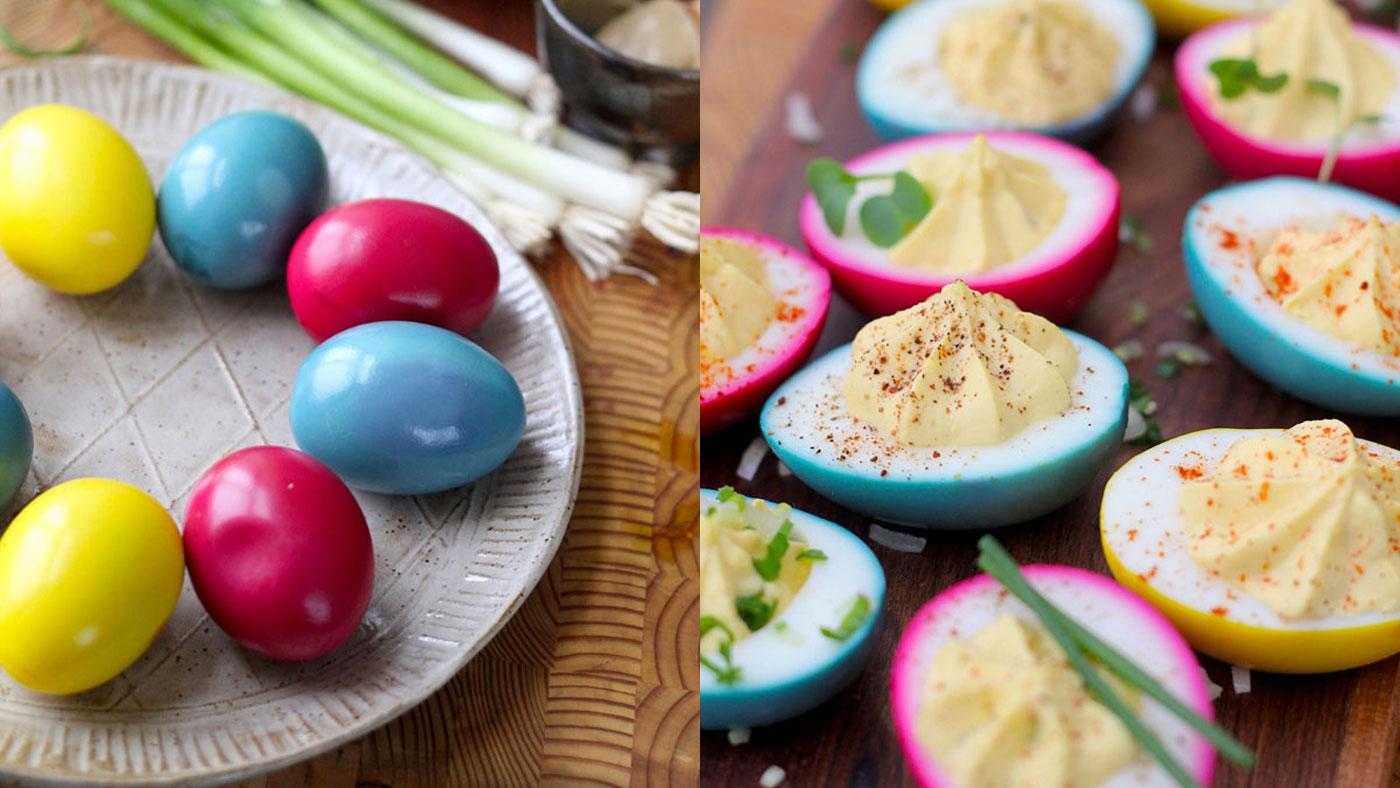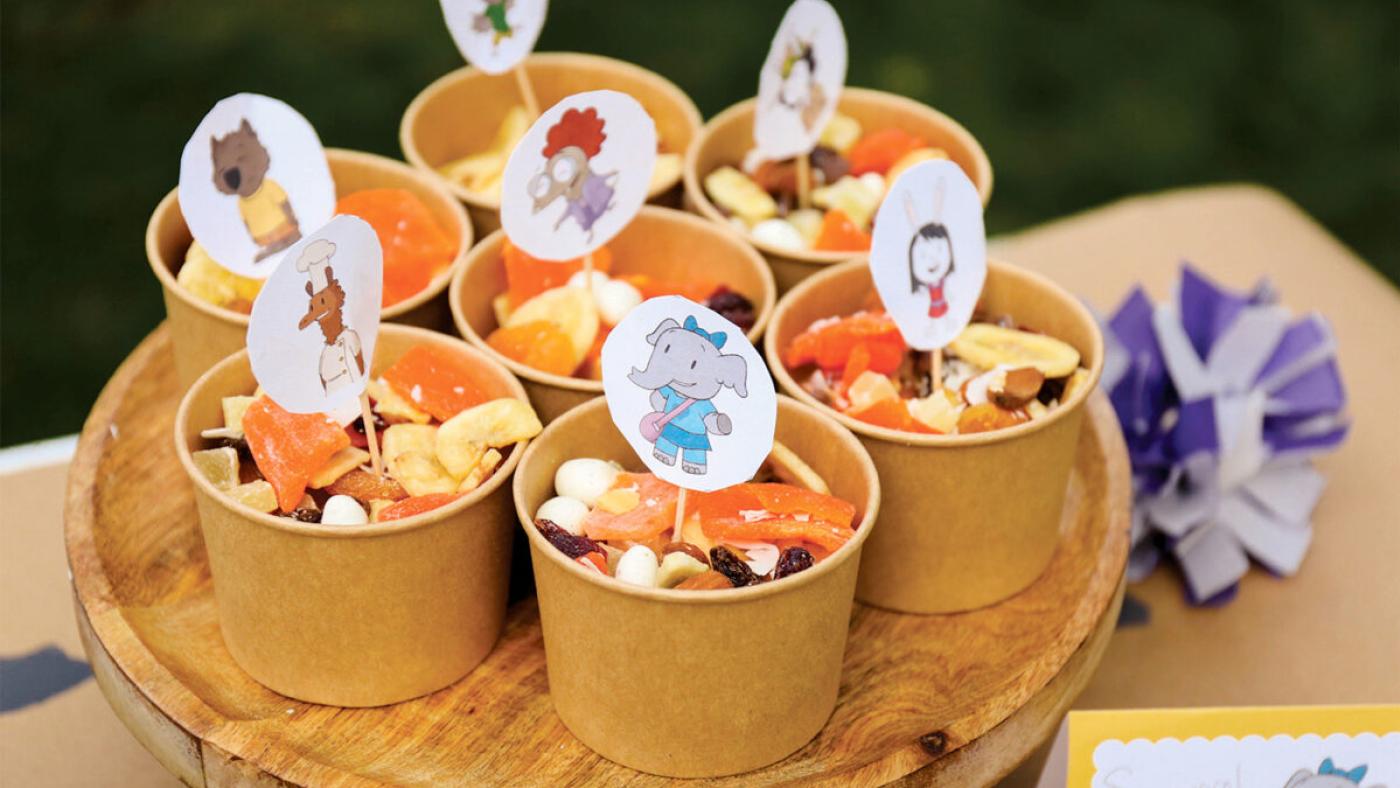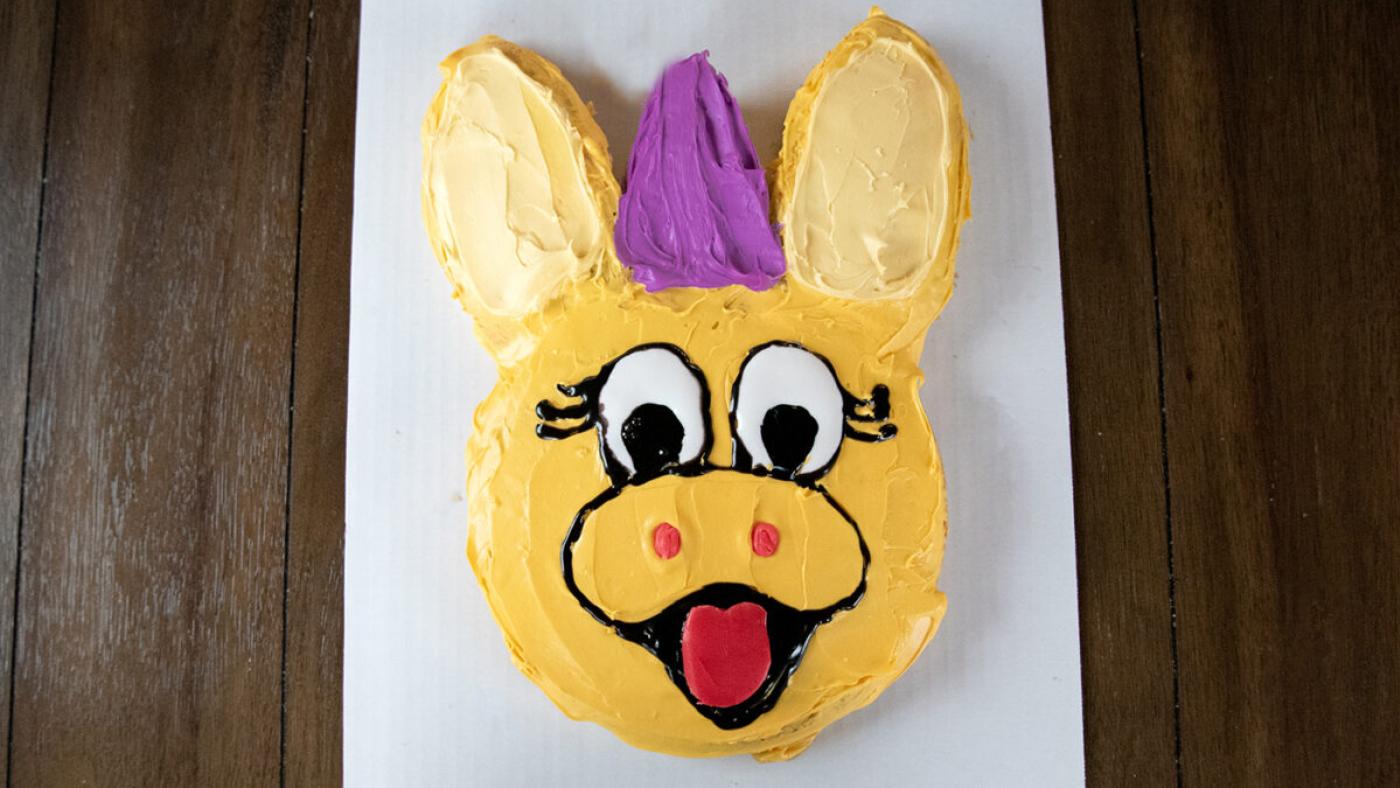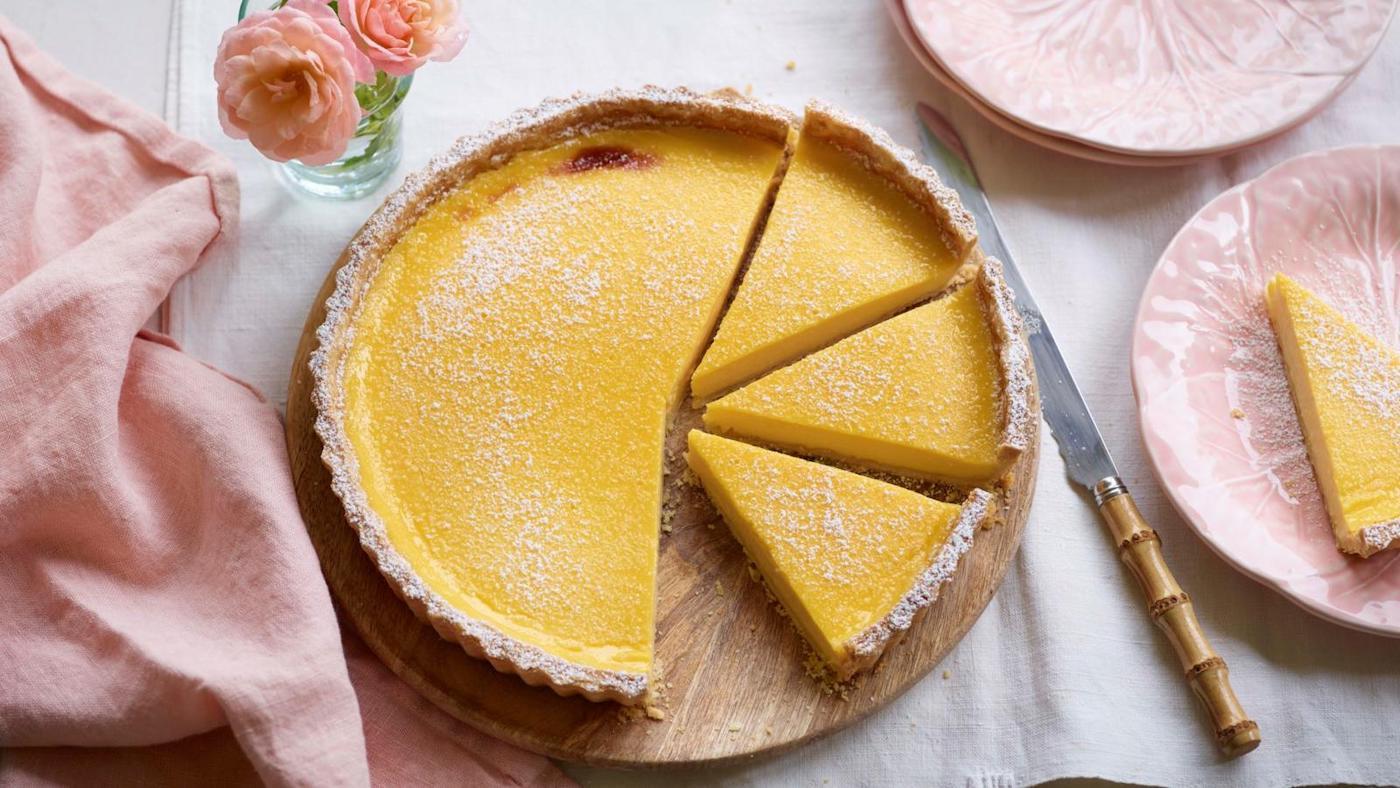Naturally Dyed Easter Eggs
Daniel Hautzinger
March 30, 2018

Dying eggs for Easter is a time-honored and beloved tradition, and it used to all be done with natural dyes. Those dyes are easy and fun to make – all you need are beets for red, turmeric for yellow, and red cabbage leaves for purple or blue. Once you've dyed them, why not spice your eggs up by deviling them (made healthier by the use of greek yogurt instead of mayo), with this recipe, courtesy of Aube Giroux at PBS Food? And while you're at it, you can learn about the history of coloring and decorating eggs for Easter.
Naturally Dyed Deviled Eggs
Ingredients
For the Dyes:
For Purple/Blue Dye:
2 cups water
2 cups chopped red cabbage leaves
1 Tbsp vinegar
1 tsp salt
3/4 tsp. baking soda (unnecessary if you prefer purple)
 Naturally dyed deviled eggs for EasterFor Pink Dye:
Naturally dyed deviled eggs for EasterFor Pink Dye:
2 cups water
1 cup chopped beets
1 Tbsp vinegar
1 tsp salt
For Yellow Dye:
2 cups water
1 Tbsp ground turmeric
1 Tbsp vinegar
1 tsp salt
For the Eggs:
9 hard-cooked eggs, peeled
1 Tbsp finely chopped spring onions or chives
1/2 cup full-fat Greek yogurt
1/2 tsp. salt
1 Tbsp dijon mustard
Optional Garnishes: smoked paprika, fresh-cracked pepper, chopped chives or spring onions, microgreens, fresh herbs
Directions
1. To make the dyes, bring to a boil 3 small pots filled with 2 cups of water per pot, along with the magic ingredients in each one (beets, red cabbage, turmeric). Simmer in a lidded pot for 20 to 30 minutes and then remove from heat. Strain out the solids so you are left with 3 brightly colored liquids. Add 1 Tbsp of vinegar and 1 tsp salt to each pot of dye. In the case of the red cabbage dye, also add 3/4 tsp baking soda to create a blue hue (or leave it as is if you prefer purple).
2. To prepare the eggs, place them in a medium-sized pot filled with enough water to cover the tops of the eggs with an inch of liquid. Bring the water to a boil and then turn off the heat. Leave the eggs in the water and cover with a lid, setting a timer for 12 minutes. Remove the eggs after 12 minutes and transfer them to a bowl filled with ice-cold water. Let them cool for one full minute. Remove from the cold water and lightly crack the shells on a hard surface, peeling the eggs carefully, making sure to leave the flesh intact. (*Note: freshly-laid eggs do not peel well. Make sure you use eggs that are at least a few days old for this recipe).
3. Place 3 peeled eggs in each pot of dye for about one hour (more or less time will give you varying intensities of color). Once you are satisfied with the color of your eggs, remove and dry gently with a paper towel.
4. Slice the eggs in half and remove all the yolks. Place the yolks in a bowl with the 1/2 cup of Greek yogurt, 1 Tbsp dijon mustard, 1 Tbsp chopped onions, and 1/2 tsp salt. Puree with a hand blender. Either spoon this mixture back into the hollowed egg halves, or if you want to get fancy, place the yolk mixture into a piping bag with a large cake decorating attachment and pipe it into the egg halves.
5. Garnish and serve.







